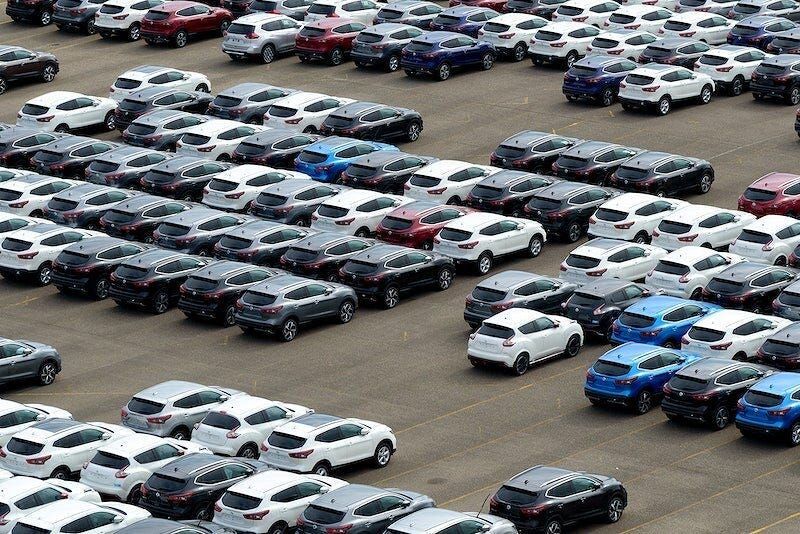
Buying a new car offers the promise of joy, yet it can also bring unexpected financial pain. Beyond the initial sticker price, a complex web of hidden costs—including registration, insurance, maintenance, and unforeseen repairs—can quickly transform an exciting purchase into a significant financial burden. For consumers aiming to make informed decisions, especially concerning luxury or high-performance vehicles, understanding these long-term commitments is absolutely crucial.
The undeniable appeal of advanced engineering, premium materials, and cutting-edge technology in high-end cars comes with a caveat. These very attributes often lead directly to substantially higher repair costs over the vehicle’s lifespan. Owners of such sophisticated automobiles frequently face hefty bills due to complex systems, the rarity of specialized components, and the mandatory need for highly skilled, specialized mechanics.
This in-depth article aims to equip potential buyers with actionable knowledge. We meticulously highlight specific car models that, despite their initial allure, are notorious for demanding extensive financial outlays for repairs and upkeep. Our focus is to provide a clear, factual assessment of what makes these vehicles so expensive to maintain, offering a transparent look at the costs involved in preserving their optimum condition.
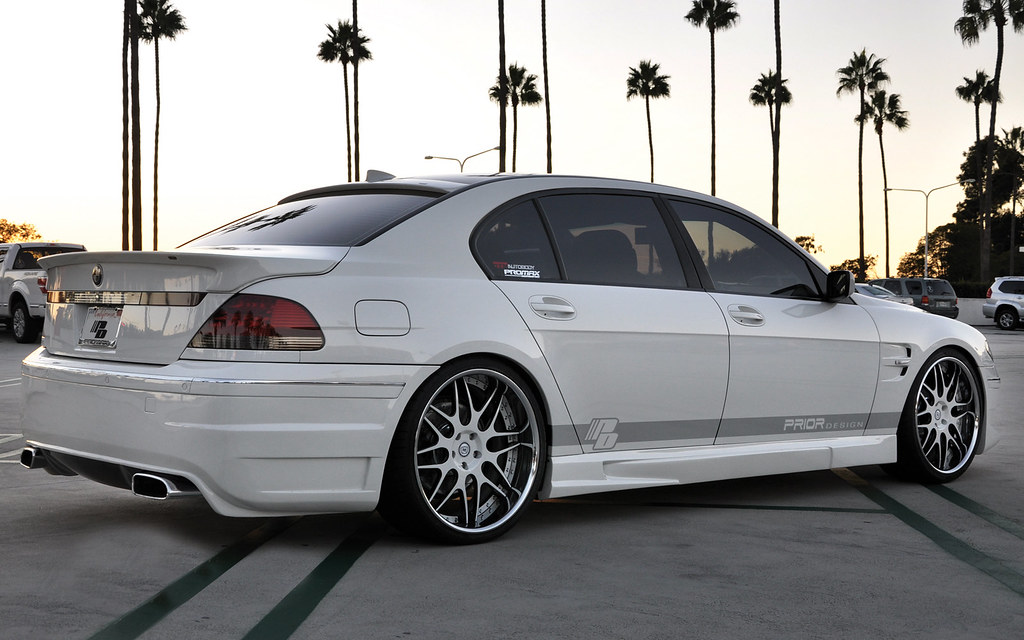
1. **BMW 7 Series**
The BMW 7 Series, a luxury full-size sedan, is celebrated for its advanced technology, premium features, and exceptionally smooth performance. It embodies BMW’s engineering excellence, promising a refined driving experience blending comfort, sophistication, and formidable power. However, the intricate design underpinning its luxury also contributes significantly to its notably high maintenance and repair costs, establishing it as a considerable long-term financial commitment for owners.
Maintaining and repairing this high-end vehicle often surprises new owners with its expense. Its complex engineering, sophisticated electronics, and high-performance components mean that even minor issues on less advanced cars translate into hefty price tags for the 7 Series. This complexity mandates expert attention and the use of proprietary parts, which are major contributors to the overall expenditure.
A prime example of these costs is the BMW 7 Series’ advanced air suspension system. While providing an incredibly comfortable ride, this system is prone to failure, with replacements costing between $2,500 and $5,000. Additionally, its turbocharged engines require specialized care, and transmission repairs can range from $5,000 to $8,000, underscoring the high cost of maintaining its intricate powertrain components.
The sophisticated electrical system, packed with advanced driver assistance and infotainment features, represents another major expense. Repairs to this network of sensors and systems can easily fall between $1,500 and $3,000. Such high repair costs stem from the need for specialized mechanics equipped with specific diagnostic tools and the exclusive use of expensive OEM parts, crucial for the vehicle’s sustained performance.
In sum, while the BMW 7 Series offers an outstanding blend of luxury and performance, potential owners must budget for substantial ongoing maintenance. Though routine servicing and extended warranties can help, long-term ownership of a 7 Series remains a decidedly pricey commitment, demanding a significant financial allocation for unforeseen repairs and consistent upkeep.
Car Model Information: 2025 Genesis GV80 3.5T
Name: BMW 7 Series
Caption: BMW 7 Series (G11)
Manufacturer: BMW
Production: 1977–present
Class: Full-size car,luxury car
BodyStyle: sedan (car)
Predecessor: BMW New Six
Categories: All articles with dead external links, Articles with dead external links from July 2021, Articles with short description, BMW vehicle series, CS1 Chinese-language sources (zh)
Summary: The BMW 7 Series is a full-size luxury sedan manufactured and marketed by the German automaker BMW since 1977. It is the successor to the BMW E3 “New Six” sedan and is now in its seventh generation.
The 7 Series is BMW’s flagship car and is only available in a sedan bodystyle (including long wheelbase and limousine models). It traditionally introduces technologies and exterior design themes before other models in BMW’s lineup.
The first generation of the 7 Series was powered by straight-6 petrol engines, and following generations have been powered by inline-4, straight-6, V8 and V12 engines with both natural aspiration and turbocharging. Since 1995, diesel engines have been optional in the 7 Series.
Unlike the BMW 3 Series and BMW 5 Series sedans, BMW does not offer a full M model, but once offered an M performance variant, the BMW M760 with its 6.6L V12 (at the time the most powerful BMW ever made, not to be confused with BMW 760 6.6 V12 which does not offer the same performance). The Alpina B7 served as the high-performance variant of the 7 Series.
Get more information about: BMW 7 Series
Buying a high-performing used car >>>
Brand: BMW Model: 7 Series
Price: $63,683 Mileage: 5,413 mi.
Read more about: Rev Up for 2025: 12 Sports Cars That Will Electrify Your Driving Experience and Set the Roads Ablaze
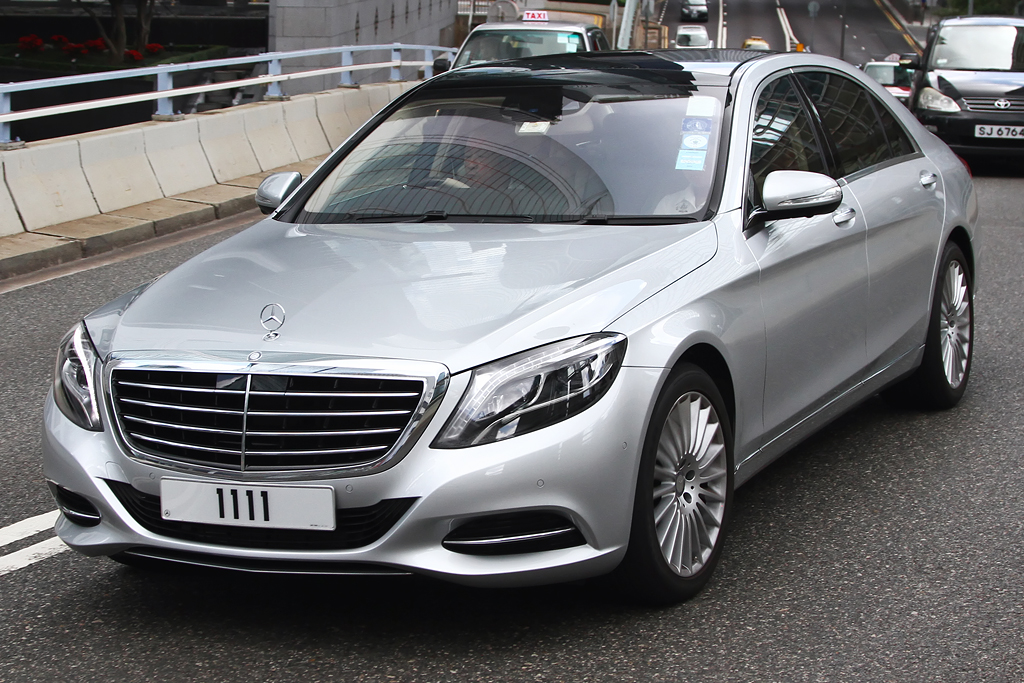
2. **Mercedes-Benz S-Class**
The Mercedes-Benz S-Class is widely acclaimed as the zenith of luxury sedans, consistently delivering cutting-edge technology, sumptuous materials, and an unparalleled smooth ride. It sets a high standard for comfort, prestige, and innovative design. However, this remarkable sophistication and engineering prowess inherently bring with them a corresponding set of elevated maintenance costs that prospective buyers must thoroughly evaluate.
The advanced nature of the S-Class’s myriad systems directly drives its higher repair expenses. Its sophisticated driver-assistance features, high-end infotainment, and complex engine components are precision-engineered for optimal performance. When these intricate parts demand attention, repair costs can be substantial, often requiring specialized diagnostics and parts exclusive to the S-Class’s advanced architecture.
A notable and costly repair is the potential replacement of the Engine Control Module (ECM), vital for engine performance. Failures here lead to serious drivability issues, with replacement costs typically ranging from $2,000 to $4,000. Similarly, the meticulously designed suspension system, engineered for maximum comfort, presents another major expense, with repairs often costing between $3,000 and $7,000.
Furthermore, turbocharger replacements, critical for maintaining the S-Class’s powerful and efficient output, can cost owners a considerable $4,000 to $6,000. The reliance on sophisticated engineering and specialized, often exclusive, Mercedes-Benz parts means that even routine maintenance tends to be pricey. This involves intricate calibration and detailed procedures by expert technicians.
While the Mercedes-Benz S-Class provides an unmatched luxury experience, its long-term ownership necessitates a significant financial commitment. Owners should budget proactively for unexpected repairs and seriously consider extended warranties or service plans to mitigate substantial potential costs. The indulgence of an S-Class is exceptional, but its upkeep demands a clear understanding of financial responsibilities.
Read more about: Driven to Endure: 12 Luxury Cars That Master High Mileage Beyond 220,000 Kilometers
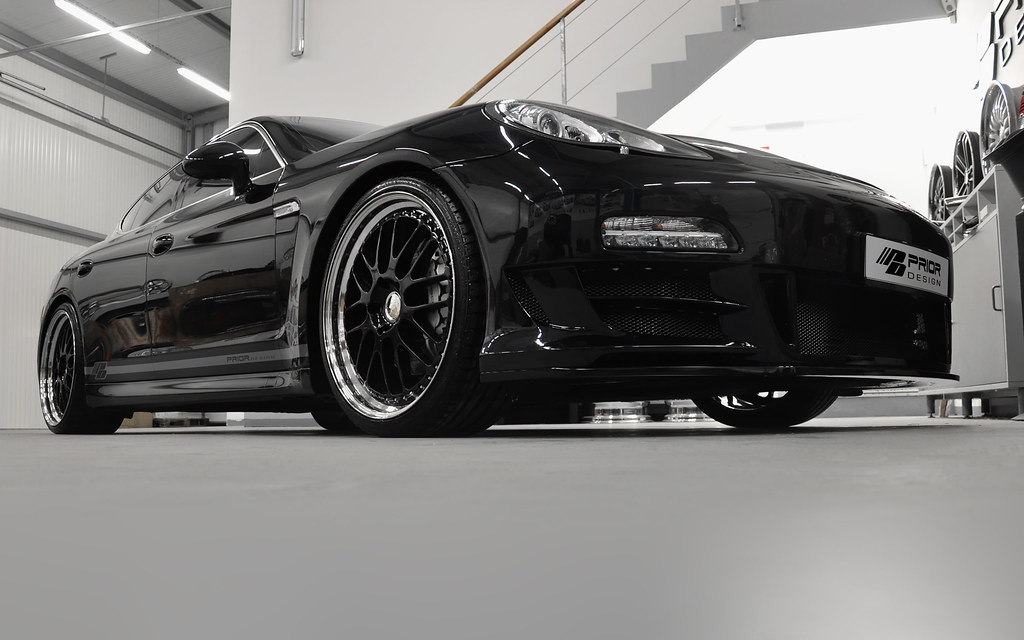
3. **Porsche Panamera**
The Porsche Panamera masterfully integrates high-performance engineering with luxury, positioning itself as a distinctive sports sedan. It offers the thrilling dynamics synonymous with Porsche, combined with the refined comfort and premium features of a luxury vehicle. This compelling blend of speed and opulence, however, also comes with notably steep repair costs that can significantly inflate long-term ownership expenses.
Maintaining a Panamera requires highly specialized mechanics intimately familiar with Porsche’s precision engineering and advanced systems. The necessary repair parts are often expensive due to their bespoke nature and high-grade materials. These elements together substantially increase ownership costs, making it crucial for prospective buyers to consider ongoing financial implications beyond the initial purchase.
One of the most frequently encountered and costly repairs for Panamera owners involves its high-performance brake system. Given the vehicle’s considerable power and the intense demands placed on its braking capabilities, wear and tear are unavoidable. Repairs in this critical area typically range from $2,500 to $5,000, illustrating how performance directly translates into significant maintenance expenditures.
Clutch replacements represent another substantial financial outlay, particularly for models featuring manual transmissions or Porsche’s advanced dual-clutch systems. These repairs can vary significantly, from $4,000 to $8,000, highlighting the intricate nature of its drivetrain. Should more serious engine issues arise, owners could face bills ranging from $6,000 to $10,000, underscoring the vital importance of diligent maintenance to avert extensive problems.
The Panamera, with its advanced technology, precision engineering, and powerful performance, delivers an exceptional driving experience. Yet, potential owners must fully prepare for these high repair costs, recognizing them as an inherent component of the luxury performance equation. While routine maintenance and extended warranties can help, it remains an undeniable fact that such luxury and performance always command a substantial financial commitment.
Car Model Information: 2018 Porsche Panamera Base
Name: Porsche Panamera
Caption: 2024 Porsche Panamera (976)
Manufacturer: Porsche
Production: 2009–present
Assembly: Leipzig
Class: Luxury car
Layout: Front-engine, rear-wheel-drive layout
Predecessor: Porsche 989
Sp: uk
Categories: 2010s cars, 2020s cars, All-wheel-drive vehicles, All articles containing potentially dated statements, All articles with unsourced statements
Summary: The Porsche Panamera is a mid- to full-sized luxury car (E-segment or F-segment for LWB in Europe) manufactured and marketed by German automobile manufacturer Porsche. It currently spans across three generations, using a front-engine and rear- or all-wheel drive configuration.
The Panamera debuted at the 13th Auto Shanghai International Automobile Show in April 2009, later launching hybrid and diesel versions in 2011. In April 2013, the company introduced a facelifted model, again at the Shanghai Auto Show, followed by the US introduction of a plug-in hybrid version, the Panamera S E-Hybrid, in November 2013. Porsche launched the second-generation Panamera in 2016, and in November 2023, the third generation was introduced.
The Panamera name, as with the Carrera name, is derived from the Carrera Panamericana race.
Get more information about: Porsche Panamera
Buying a high-performing used car >>>
Brand: Porsche Model: Panamera
Price: $39,880 Mileage: 56,253 mi.
Read more about: Car Subscription Services: A Comprehensive Review to Determine Their Value and Fit for Your Lifestyle
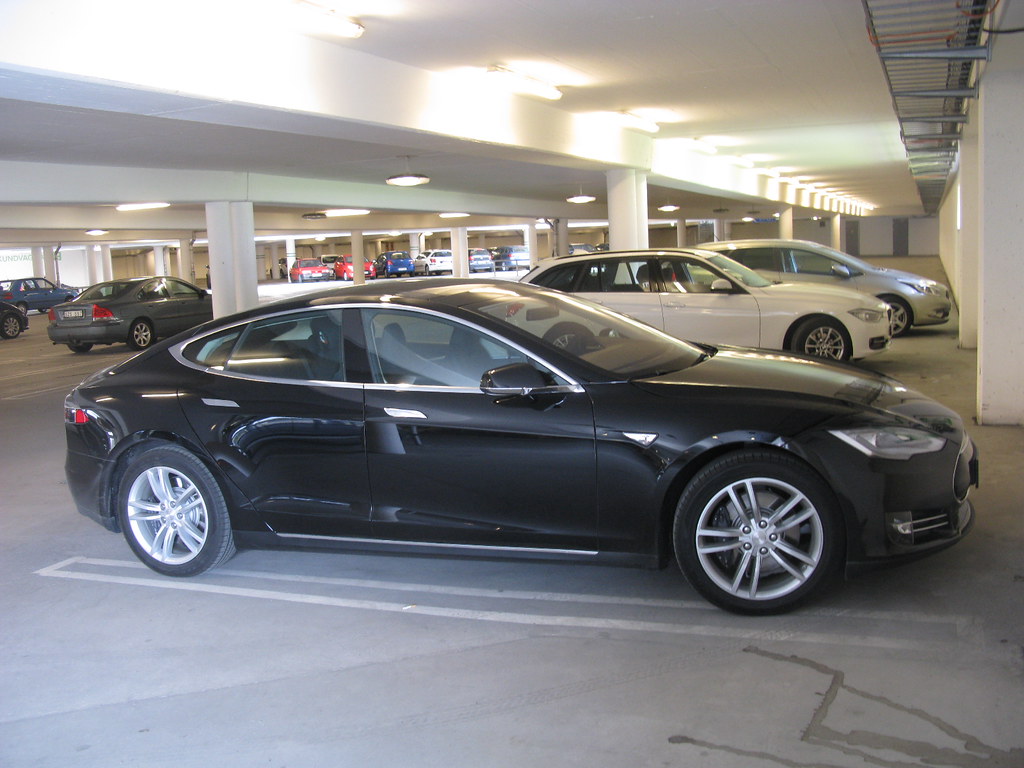
4. **Tesla Model S**
Tesla vehicles are widely celebrated for their innovative electric technology, futuristic design, and advanced features that have profoundly impacted the automotive landscape. The Model S, in particular, showcases this pioneering spirit, offering impressive acceleration, extended range, and a sophisticated, minimalist cabin. However, beneath its cutting-edge electric exterior, a potential for surprisingly high maintenance costs exists, often catching new owners unprepared for EV ownership realities.
The distinctive nature of Tesla’s engineering, heavily reliant on specialized components, proprietary software, and a more limited availability of parts compared to conventional cars, frequently results in expensive repairs. Unlike traditional internal combustion engine vehicles, electric cars like the Model S have unique maintenance requirements and potential issues, many necessitating specific tools, training, and processes found exclusively at authorized Tesla service centers. This exclusivity plays a significant role in elevating repair expenses.
Without question, one of the most substantial and potentially burdensome repairs for a Tesla Model S is a battery replacement. As the battery pack constitutes the very heart of an electric vehicle, any major issue or degradation requiring its replacement can command an astonishing $10,000 to $20,000, depending on the specific model and battery configuration. This immense cost makes battery health a paramount financial consideration for long-term ownership, representing a colossal burden if replacement becomes necessary.
Beyond the battery, repairs to the integrated screen and software are also notably pricey, typically costing between $1,500 and $4,000. This is primarily due to Tesla’s deeply integrated infotainment system, which governs a multitude of vehicle functions through complex software. Furthermore, the suspension and steering systems, which must manage the considerable weight of the large battery pack, can also require attention. Repairs in these areas may range from $2,000 to $6,000, adding another layer of significant expense to the ownership experience.
The requirement for specialized Tesla service centers and the fact that proprietary parts are not widely available further amplify repair costs. While a Tesla delivers an undeniably sleek, high-tech, and exhilarating driving experience, prospective owners should meticulously account for the long-term maintenance expenses. While extended warranties and proactive maintenance can mitigate some costs, owning a Tesla Model S ultimately remains a significant financial commitment, demanding a thorough understanding of its unique upkeep requirements.
Car Model Information: 2025 Genesis GV80 3.5T
Name: Tesla Model S
ModelYears: 2013–present
Alt: A front-three quarter view of a gray Model S
Caption: #2016–2019: First major update
Designer: Franz von Holzhausen
Weight: cvt
Height: cvt
Width: cvt
Length: cvt
Wheelbase: cvt
ElectricRange: cvt
Battery: kWh,lithium-ion battery
Motor: Unbulleted list
Transmission: Reduction drive
Related: Tesla Model X
Layout: Rear-motor, rear-wheel drive,Dual-motor, all-wheel-drive,Tri-motor, all-wheel-drive layout
BodyStyle: liftback,sedan (automobile)
Class: Full-size car
Assembly: Unbulleted list
Production: June 2012 – present
Manufacturer: Tesla, Inc.
Sp: us
Chassis: Unibody
Categories: 2020s cars, All-wheel-drive vehicles, All Wikipedia articles written in American English, All articles containing potentially dated statements, Articles containing potentially dated statements from 2025
Summary: The Tesla Model S is a battery-electric, four-door full-size car produced by the American automaker Tesla since 2012. The automaker’s second vehicle and longest-produced model, the Model S has been described as one of the most influential electric cars in the industry. Car and Driver named it one of the best cars of the year in 2015 and 2016. Its various accolades include the Motor Trend Car of the Year Award in 2013.
Tesla started developing the Model S around 2007 under the codename WhiteStar. Initially, Henrik Fisker was appointed as the lead designer for the WhiteStar project; after a dispute with Elon Musk, Tesla’s CEO, Fisker was replaced by Franz von Holzhausen. By 2008, von Holzhausen had designed what would become the production Model S’s exterior. Tesla unveiled a prototype of the vehicle in March 2009 in Hawthorne, California. In 2010, Tesla acquired a facility in Fremont, California, to produce the Model S, which was previously owned by General Motors and Toyota. Series manufacture of the car officially began at the Tesla Fremont Factory in June 2012. Tesla carried out the final assembly for European markets at its facilities in Tilburg, Netherlands, between 2013 and 2021.
The Model S typically uses either one or initially two alternating current induction motors; since 2019, dual-motor versions have used a permanent magnet motor in the front, though the high-performance Model S Plaid’s three motors are permanent magnet units by default. Constructed mostly of aluminum, the Model S shares 30 percent of its components with the Model X—a crossover SUV that was introduced in 2015. The Model S has undergone several updates during its production, the most prominent ones occurring in 2016 and 2021. These updates have usually included modifications to the motor, such as changes to power or torque, revised exterior elements, and refreshed interior features. One such change included the 2015 introduction of Tesla Autopilot—a partial vehicle automation advanced driver-assistance system.
In 2015, the Model S was the world’s best-selling plug-in electric vehicle. In 2012, it was included on Time’s list of the Best Inventions of the Year, and the magazine later included it on its list of the 10 Best Gadgets of the 2010s in 2019. In 2014, The Daily Telegraph described the Model S as a “car that changed the world”. Road & Track argued that, with the introduction of the Plaid and features such as the yoke steering wheel, Tesla managed to turn the Model S into “perhaps one of the worst [cars in the world]”.
Get more information about: Tesla Model S
Buying a high-performing used car >>>
Brand: Tesla Model: Model S
Price: $63,683 Mileage: 5,413 mi.
Read more about: From ‘Terminator’ Fears to Copyright Battles: 12 Celebrities Sound Off on the AI Revolution

5. **Audi A8**
The Audi A8 stands as a distinguished luxury flagship sedan, celebrated for its sophisticated blend of advanced technology, premium features, and a remarkably smooth all-wheel-drive system. It projects a refined and commanding presence, offering a driving experience defined by elegance, comfort, and state-of-the-art innovation. However, these very qualities, which make the A8 so desirable, also underpin its reputation for quite expensive maintenance and repair costs, forming a critical consideration for potential buyers.
Maintaining and repairing this high-end vehicle can be particularly costly due to its complex engineering and reliance on specialized components. The A8 is precisely designed, integrating a multitude of interconnected systems where even seemingly minor issues can quickly escalate into significant expenses. The intricate network of electronics, high-performance parts, and luxury amenities all demand specific expertise and genuine parts for proper servicing, which directly translates into higher service bills.
A prime example of a substantial and potentially costly repair for an Audi A8 is a transmission replacement, a vital component for the vehicle’s seamless power delivery. This repair can dramatically range from $5,000 to $9,000, representing a major financial undertaking. Furthermore, the A8’s sophisticated electrical system, densely packed with advanced driver-assistance features and an elaborate infotainment system, can also prove exceptionally pricey to fix, with repairs to these critical electronic components typically costing between $2,000 and $5,000.
Adding to the list of significant expenses is the adaptive air suspension system. While engineered to provide superior ride comfort and dynamic handling, this complex system is, unfortunately, prone to failure over time. When it requires attention, a replacement can cost potential owners anywhere from $3,000 to $6,000. Given the A8’s dependence on cutting-edge technology and precision engineering, repairs often necessitate specialized mechanics with specific training and diagnostic equipment, alongside genuine Audi parts, further escalating the overall costs.
Ultimately, while the Audi A8 delivers an exceptional driving experience, characterized by top-tier luxury and robust performance, potential owners should be thoroughly prepared for significant maintenance expenses throughout its lifespan. Investing in a comprehensive extended warranty or adhering strictly to routine servicing schedules can certainly help mitigate some of these high repair costs. Nonetheless, owning an Audi A8, like many vehicles in its class, requires a clear understanding and acceptance of the considerable financial commitment involved in maintaining its sophisticated elegance.
Car Model Information: 2025 Audi A8 L 55
Name: Audi A8
Manufacturer: Audi AG
Assembly: Neckarsulm
Production: #D2
Class: Full-size,luxury car
BodyStyle: sedan (automobile)
Platform: List of Volkswagen Group platforms
Layout: FF layout
Related: Audi S8
Predecessor: Audi V8
Categories: 2000s cars, 2010s cars, 2020s cars, All-wheel-drive vehicles, All articles lacking reliable references
Summary: The Audi A8 is a full-size luxury sedan manufactured and marketed by the German automaker Audi since 1994. Succeeding the Audi V8, and now in its fourth generation, the A8 has been offered with either front- or permanent all-wheel drive and in short- and long-wheelbase variants. The first two generations employed the Volkswagen Group D platform, with the current generation deriving from the MLB platform. After the original model’s 1994 release, Audi released the second generation in late 2002, the third in late 2009, and the fourth and current iteration in 2017. Noted as the first mass-market car with an aluminium chassis, all A8 models have used this construction method co-developed with Alcoa and marketed as the Audi Space Frame.
A mechanically upgraded, high-performance version of the A8 debuted in 1996 as the Audi S8. Produced exclusively at Audi’s Neckarsulm plant, the S8 is fitted standard with Audi’s quattro all-wheel drive system. The S8 was only offered with a short-wheelbase for the first three generations, being joined by a long-wheelbase variant for the fourth generation.
Get more information about: Audi A8
Buying a high-performing used car >>>
Brand: Audi Model: A8
Price: $76,711 Mileage: 935 mi.
Read more about: Buyer Beware: 14 Cars Notorious for Breaking Down Prematurely, Especially After 100,000 Miles

6. **Land Rover Range Rover**
The Land Rover Range Rover, a luxury SUV, is renowned for its off-road capabilities and premium features, embodying a blend of ruggedness and opulence. However, this sophisticated engineering and the incorporation of high-tech systems also position it as one of the most expensive vehicles to maintain and repair. Owners frequently encounter substantial repair bills, primarily due to the vehicle’s complex drivetrain and intricate electronic components that demand specialized attention and parts.
Among the most common and costly issues faced by Range Rover owners is the air suspension system. While this system is crucial for providing its signature smooth ride, it is regrettably prone to failure. When repairs are needed, owners can expect costs ranging between $2,500 and $5,000 to address these issues, underscoring the expense of maintaining its advanced comfort features. This component’s vulnerability is a consistent financial consideration for long-term ownership.
Further compounding the ownership costs are potential engine repairs, which can represent a major expense for Range Rover owners. Depending on the complexity and the specific high-performance model, these repairs can range significantly from $4,000 to $8,000. Additionally, a transmission replacement, another critical and costly issue, can see prices escalate to between $6,000 and $10,000, firmly establishing drivetrain maintenance as a substantial financial burden over the vehicle’s lifespan.
Range Rovers are extensively equipped with advanced technology and luxury features, necessitating that repairs be performed by specialized mechanics who utilize high-quality, often proprietary, parts. While the vehicle undoubtedly offers a refined driving experience, whether on or off the road, prospective owners must remain acutely aware of the associated high maintenance costs. Engaging in routine servicing and considering extended warranties can assist in managing these expenses, yet long-term ownership inherently remains a notably costly commitment for those who choose this luxury SUV.
Car Model Information: 2025 Genesis GV80 3.5T
Caption: 2022 Range Rover SE P440e (L460, fifth generation, United Kingdom)
Aka: unbulleted list
Name: Range Rover
Manufacturer: unbulleted list
Production: 1969–present
Assembly: unbulleted list
Class: unbulleted list
Layout: Front-engine, four-wheel-drive layout
Sp: uk
Categories: 1980s cars, 1990s cars, 2000s cars, 2010s cars, 2020s cars
Summary: The Land Rover Range Rover, generally shortened to Range Rover, is a 4WD luxury mid to full size crossover marque and sub-brand of Jaguar Land Rover, owned by India-based Tata Motors. The Range Rover line was launched in 1970 by British Leyland and since 2022 is in its fifth generation.
Additional models have been launched under the Range Rover name, including the Range Rover Sport, Range Rover Evoque, and Range Rover Velar.
Get more information about: Range Rover
Buying a high-performing used car >>>
Brand: Land Rover Model: Range Rover
Price: $63,683 Mileage: 5,413 mi.
Read more about: Ron DiMenna, Visionary Founder of Ron Jon Surf Shop, Dies at 88, Leaving a Legacy That Transformed Surf Culture into a Mainstream Phenomenon
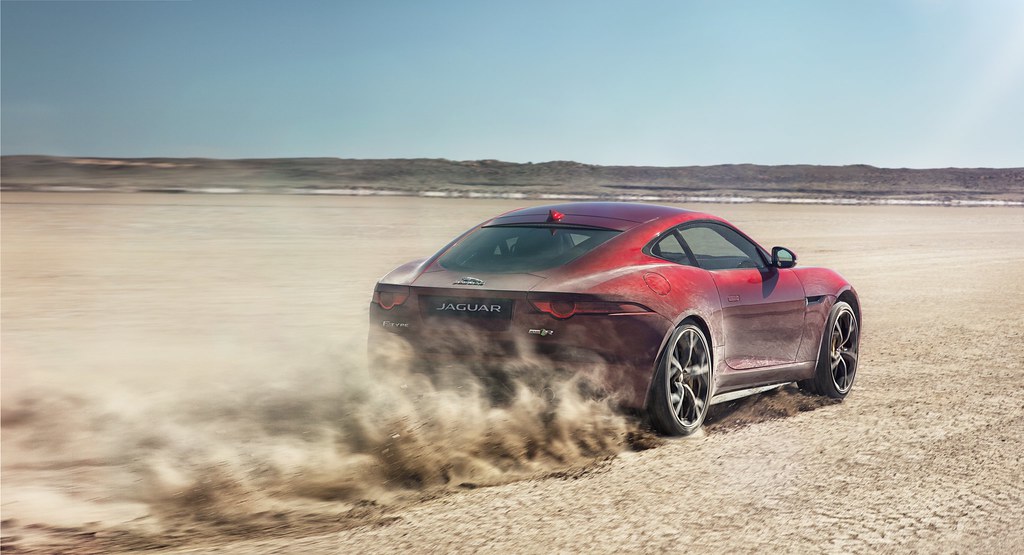
7. **Jaguar F-Type**
The Jaguar F-Type stands as a visually stunning sports car, highly acclaimed for its powerful engine and exceptionally sharp handling, making it a compelling choice for enthusiasts. Yet, akin to the majority of high-performance vehicles in its class, the F-Type is accompanied by considerably expensive repair costs. Its meticulous precision engineering, coupled with advanced technology and specialized parts, renders maintenance a consistently costly endeavor for owners.
One of the most financially significant repairs an F-Type owner might face is the timing chain replacement. This critical component, vital for engine operation, can incur costs ranging from $3,000 to $6,000. A malfunction in the timing chain has the potential to cause severe engine damage, making its timely and professional repair not only essential but also a substantial financial outlay to prevent catastrophic failures.
Beyond engine timing, the high-performance brake system, specifically designed to provide superior stopping power, also demands significant attention. Wear and tear on this critical system can necessitate repairs ranging from $2,500 to $5,000, reflecting the intense demands placed on it during spirited driving. Furthermore, transmission repairs, which are crucial for the F-Type’s smooth and responsive performance, can set owners back anywhere from $4,000 to $7,000, highlighting the intricate nature of its sophisticated powertrain.
Given the F-Type’s status as a luxury sports car, repairs almost invariably demand the expertise of specialized mechanics and the exclusive use of genuine Jaguar parts, which inevitably drives up the overall costs. While the F-Type delivers an exhilarating driving experience, potential owners must meticulously factor in these high maintenance expenses. While regular servicing and extended warranties can certainly help reduce unexpected repair bills, owning this sleek and powerful sports car indisputably represents a considerable long-term financial commitment.
Car Model Information: 2015 Jaguar F-TYPE R
Name: Jaguar F-Type (X152)
Caption: Jaguar F-Type R-Dynamic coupé
Manufacturer: Jaguar Land Rover
ModelCode: X152
Aka: Lister LFT
Production: 2013–2024
ModelYears: 2014–2024
Assembly: Birmingham,England
Designer: Ian Callum,César Pieri (Project 7)
Class: Sport car
BodyStyle: unbulleted list
Platform: Jaguar Land Rover car platforms#D6a
Related: Jaguar C-X16
Layout: Front-engine, rear-wheel-drive layout
Engine: ubl
Powerout: ubl
Abbr: on
Transmission: ubl
Wheelbase: Convert
Length: 4470 mm
Width: 1923 mm
Height: 1308 mm
Weight: convert
Sp: uk
Predecessor: Jaguar XK
Categories: All Wikipedia articles written in British English, All articles with failed verification, All articles with unsourced statements, Articles with failed verification from April 2025, Articles with short description
Summary: The Jaguar F-Type (X152) is a series of two-door, two-seater sports cars manufactured by British car manufacturer Jaguar Land Rover under their Jaguar Cars marque from 2013 to 2024. The car’s JLR D6a platform is based on a shortened version of the XK’s platform. It is the so-called “spiritual successor” to the E-Type.
The car was launched initially as a 2-door soft-top convertible, with a 2-door fastback coupé version launched in 2013. The F-Type underwent a facelift for the 2021 model year. It was unveiled in December 2019, featuring a significantly restyled front end and dashboard, and simplified drivetrain options. Jaguar announced that the F-Type will be discontinued after the 2024 model year. Production ended in June 2024, by which time 87,731 examples had been built.
Get more information about: Jaguar F-Type
Buying a high-performing used car >>>
Brand: Jaguar Model: F-Type
Price: $47,591 Mileage: 15,327 mi.
Read more about: High-Performance Thrills, Sensible Spends: 15 Cars That Rival the Porsche 911 Without the Hefty Price Tag
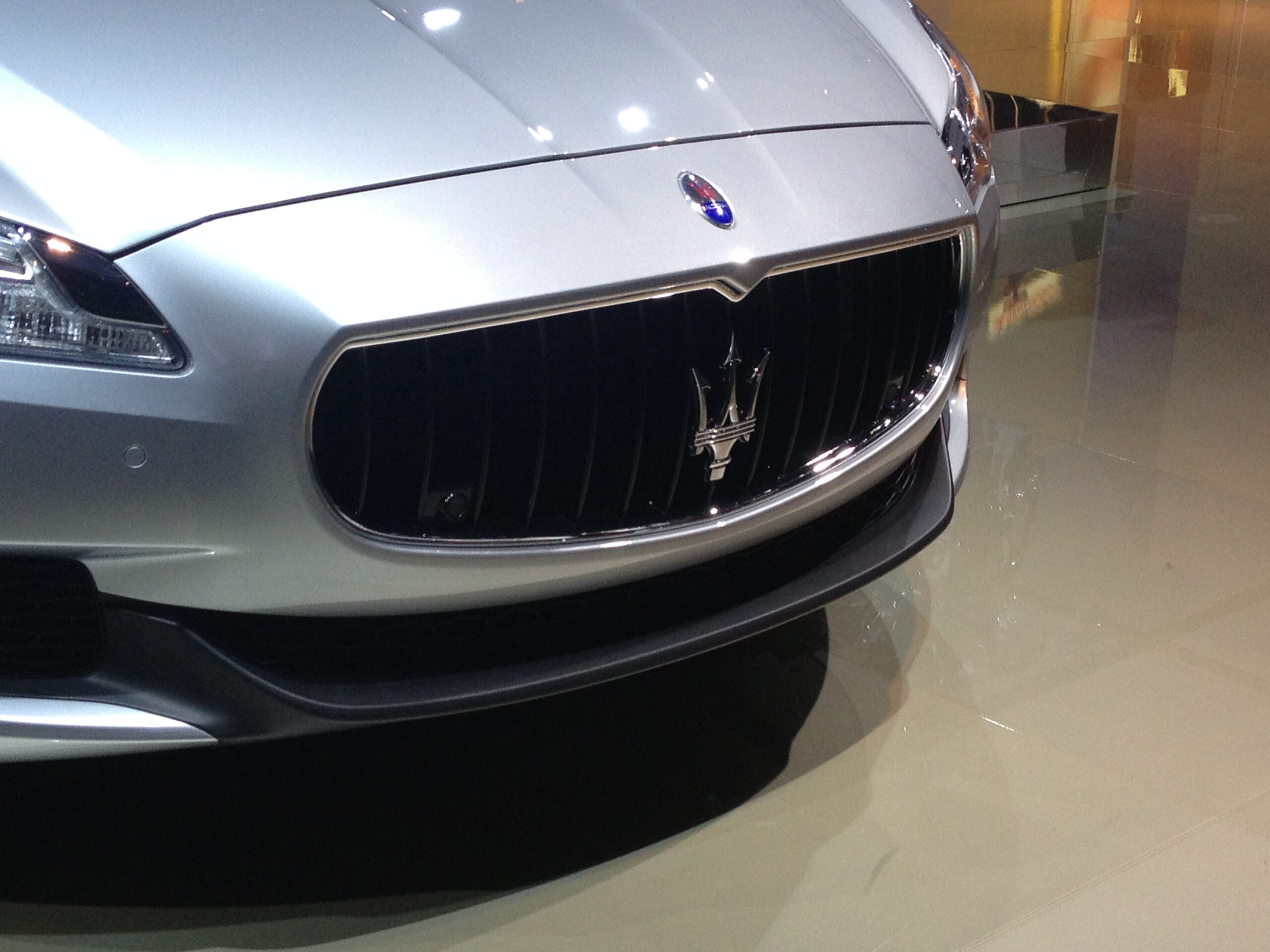
8. **Maserati Quattroporte**
The Maserati Quattroporte epitomizes an Italian luxury sedan, skillfully combining an elegant aesthetic with the potent performance derived from its Ferrari-engineered engine. However, the long-term maintenance of a Maserati is far from inexpensive, primarily due to its reliance on specialized components and the labor-intensive nature of its repairs, which collectively drive up ownership costs significantly.
One of the most substantial financial burdens for Quattroporte owners frequently involves engine work. Given the intricate complexity of its high-performance engine, even issues that might seem minor can quickly escalate into hefty bills, with costs typically ranging from $5,000 to $10,000. This makes diligent engine maintenance and prompt attention to any potential problems absolutely critical to mitigating larger expenses.
The sophisticated suspension system, meticulously designed to offer a blend of a smooth yet sporty ride, represents another costly component to repair. Owners can anticipate prices for suspension repairs ranging from $3,000 to $7,000, reflecting the precision engineering involved. Additionally, clutch replacements, especially pertinent for models equipped with an automated manual transmission, can incur costs between $4,000 and $8,000, highlighting the expense associated with its specialized drivetrain.
Crucially, Maserati parts are not only expensive but also tend to be less widely available compared to those for more mainstream luxury brands. This scarcity can make maintenance more challenging and often contributes to higher repair costs, as specialized sourcing or longer wait times may be involved. While the Quattroporte delivers an unmatched combination of performance and sophistication, prospective owners should be thoroughly prepared for significant upkeep costs. While regular servicing and extended warranties can assist in managing these expenses, long-term ownership of this Italian luxury sedan unequivocally remains a pricey commitment.
Car Model Information: 2012 Maserati Quattroporte S
Name: Maserati Quattroporte
Caption: Maserati Quattroporte VI
Manufacturer: Maserati
Production: 1963–1969,1971,1974–1990,1994–2001,2003–2012,2013–2023
Assembly: Modena,Grugliasco,Turin
Class: Full-size luxury car
BodyStyle: Sedan (car)
Sp: uk
Categories: 1970s cars, 1980s cars, 1990s cars, 2000s cars, 2010s cars
Summary: The Maserati Quattroporte (Italian pronunciation: [ˌkwattroˈpɔrte]) is a four-door full-size luxury sedan produced by Italian automobile manufacturer Maserati. The name translated from Italian means “four doors”. The production of the sixth generation ended in late 2023, with the first generation introduced in 1963.
Get more information about: Maserati Quattroporte
Buying a high-performing used car >>>
Brand: Maserati Model: Quattroporte
Price: $12,980 Mileage: 82,851 mi.
Read more about: Who Crafts the Soul of the Trident? A Deep Dive into Maserati’s Engine Evolution Beyond Ferrari
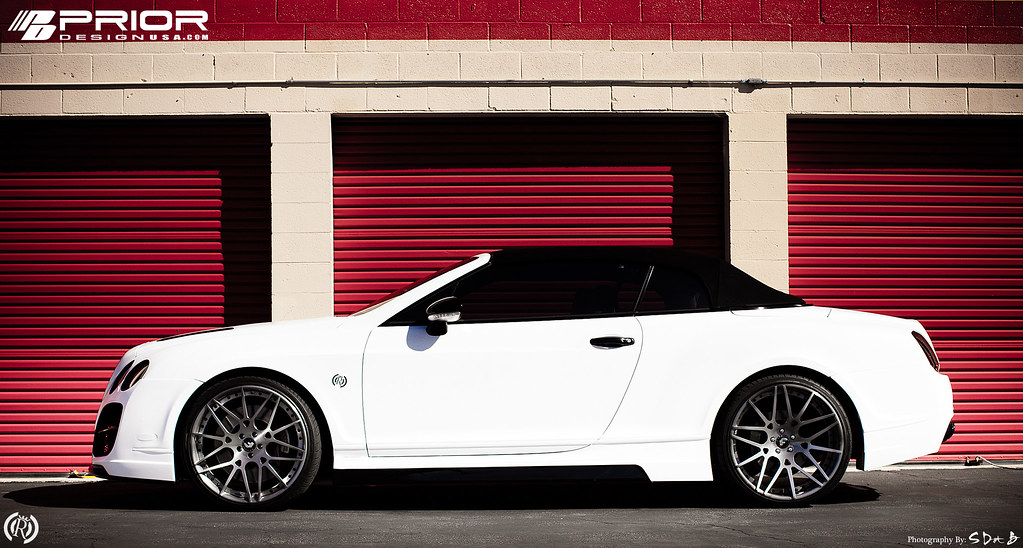
9. **Bentley Continental GT**
The Bentley Continental GT stands as a true pinnacle of luxury and performance, offering an unparalleled blend of exquisite craftsmanship and formidable power, making it a dream car for many. However, maintaining this grand tourer entails extremely high repair costs, a direct consequence of its immensely complex engineering and the exclusive, often bespoke, nature of its parts.
Among the most expensive fixed items for a Continental GT is its advanced brake system, which can cost owners between $4,000 and $8,000 to maintain or replace. Even more substantial are potential engine repairs, which can range dramatically from $6,000 to $12,000, particularly for models equipped with the formidable W12 engines. These figures underscore the considerable financial commitment required to keep such a high-performance luxury vehicle in optimal condition.
The sophisticated suspension system, meticulously engineered to provide a smooth yet dynamically capable ride, is another notably costly component to repair. Owners should anticipate suspension repair costs ranging from $5,000 to $10,000. This highlights that many of the core systems contributing to the Bentley’s luxurious ride and performance are inherently expensive to service or replace due to their advanced design and exclusive materials.
Bentley parts are not mass-produced, and the servicing of these vehicles requires highly specialized mechanics with specific training and diagnostic equipment. This exclusivity, combined with the intricate nature of its construction, makes even routine maintenance an expensive proposition. While the Continental GT offers an elite driving experience, potential owners must be financially prepared for the long-term costs. While regular servicing and an extended warranty can certainly help mitigate some expenses, luxury at this exceptional level always commands a substantial premium.
Car Model Information: 2025 Genesis GV80 3.5T
Name: Bentley Continental GT
Manufacturer: Bentley
Layout: F4 layout
Production: 2003–present
Assembly: Crewe
Class: Grand tourer
BodyStyle: fastback,coupé
Sp: uk
Categories: 2010s cars, 2020s cars, All-wheel-drive vehicles, All Wikipedia articles written in British English, All articles to be split
Summary: The Bentley Continental GT is a grand touring car manufactured and marketed by the British company Bentley Motors since 2003. The Continental GT is offered as a two-door coupé or convertible, with four seats. It was the first new Bentley released after the company’s acquisition by Volkswagen AG in 1998, and the first Bentley to employ mass production manufacturing techniques. It was later joined by the Bentley Continental Flying Spur, a four-door saloon car variant.
Get more information about: Bentley Continental GT
Buying a high-performing used car >>>
Brand: Bentley Model: Continental GT
Price: $63,683 Mileage: 5,413 mi.
Read more about: Rev Up for 2025: 12 Sports Cars That Will Electrify Your Driving Experience and Set the Roads Ablaze
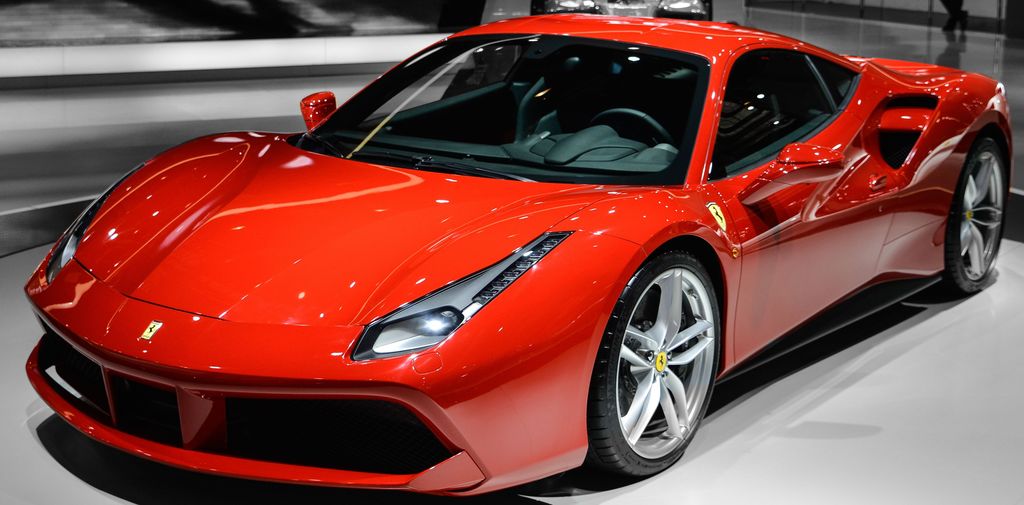
10. **Ferrari 488 GTB**
For many automotive enthusiasts, owning a Ferrari represents the ultimate dream, symbolizing peak performance and automotive artistry. However, the reality of maintaining one of these high-performance machines is an undeniably costly endeavor. Ferraris demand specialized mechanics, rare and often custom-made parts, and meticulous servicing, all of which contribute to extremely expensive repair bills that can quickly accumulate.
Engine repairs are consistently among the priciest issues for a Ferrari, with costs potentially soaring anywhere from $10,000 to $20,000. This is especially true for models equipped with their iconic V8 or V12 engines, where the intricacy and precision engineering command a premium for any intervention. Such figures emphasize the monumental financial commitment required for major powertrain servicing.
The clutch replacement is another significant financial outlay, particularly in older models that feature automated manual transmissions, and can set owners back between $6,000 and $12,000. Additionally, repairs to the suspension and braking systems, which are absolutely crucial for maintaining the Ferrari’s legendary handling and uncompromising safety, typically range from $5,000 to $10,000, highlighting the cost of maintaining its dynamic capabilities.
Ferrari parts are not merely expensive but also notoriously difficult to source, frequently requiring direct procurement from factory-authorized service centers for the majority of major repairs. Even what might be considered routine maintenance, such as oil changes and annual servicing, can easily cost thousands of dollars, far surpassing typical luxury vehicle expenses. While a Ferrari offers an unmatched driving experience, potential owners must be thoroughly prepared for ongoing, consistently sky-high maintenance expenses that are an inherent part of owning such an automotive masterpiece.
Car Model Information: 2025 Genesis GV80 3.5T
Name: Ferrari 488
Manufacturer: Ferrari
Production: 2015–2020
Assembly: Maranello
Designer: Flavio Manzoni
Class: Sports car
BodyStyle: berlinetta
Layout: Rear-engine, rear-wheel-drive layout
Engine: Ferrari F154 engine,twin-turbo,V8 engine
Powerout: ubl
Abbr: on
Transmission: Dual clutch transmission
Wheelbase: 2650 mm
Length: 4568 mm
Width: 1952 mm
Height: 1213 mm
Weight: {{convert,3241,lb,kg,0,abbr=on,order=flip
Order: flip (kerb, Pista)
Predecessor: Ferrari 458
Successor: Ferrari F8
Sp: uk
Categories: Articles with short description, Cars discontinued in 2019, Cars introduced in 2015, Commons category link is on Wikidata, Ferrari vehicles
Summary: The Ferrari 488 (Type F142M) is a mid-engine sports car produced by the Italian automobile manufacturer Ferrari. The car replaced the 458, being the first mid-engine Ferrari to use a turbocharged V8 since the F40. It was succeeded by the Ferrari F8.
The car is powered by a 3.9-litre twin-turbocharged V8 engine, smaller in displacement but generating a higher power output than the 458’s naturally aspirated engine. The 488 GTB was named “The Supercar of the Year 2015” by car magazine Top Gear, as well as becoming Motor Trend’s 2017 “Best Driver’s Car”. Jeremy Clarkson announced the 488 Pista as his 2019 Supercar of the Year.
Get more information about: Ferrari 488
Buying a high-performing used car >>>
Brand: Ferrari Model: 488 GTB
Price: $63,683 Mileage: 5,413 mi.
Read more about: Wallet-Wreckers on Wheels: 14 Cars That Demand a King’s Ransom in Repairs
Luxury and high-performance cars, while offering unparalleled driving experiences and a profound sense of prestige, come with a stark financial reality: their repair and maintenance costs can be overwhelmingly high. For individuals considering the purchase of any of these distinguished vehicles, it is absolutely crucial to meticulously factor in these significant ongoing expenses. While extended warranties and diligent adherence to proper maintenance schedules can certainly help mitigate unexpected financial burdens, the fundamental truth remains that owning such sophisticated automobiles requires a substantial and continuous financial commitment. Before making that aspirational purchase, a comprehensive evaluation of these long-term costs is essential to ensure that the joy of ownership is not overshadowed by unforeseen financial strains. For true enthusiasts, the experience may indeed feel priceless, but being thoroughly prepared for the hefty bills that inevitably accompany it is the mark of a truly informed decision.

